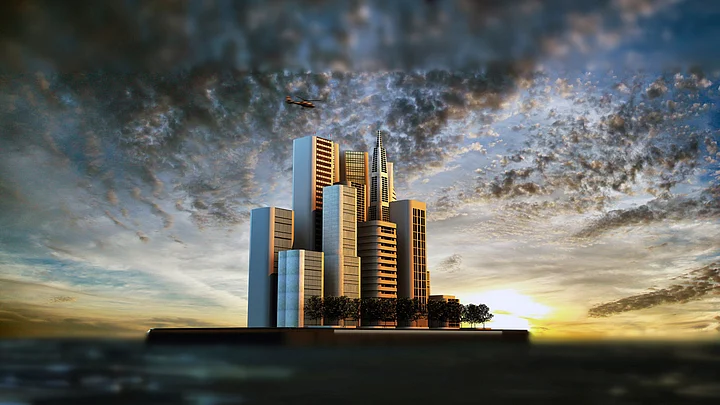While flying into Delhi these days, one usually struggles to identify any discernible outline or landmarks, as the city is usually covered in a thick brown haze. This ever-present haze, that is especially dense in winters, is a constant reminder, to Delhiites, of the noxious mix of gases they breathe on a daily basis. As someone who moved to Delhi only two years ago, I have also been a victim of its gas chamber, contracting bronchitis during the two winters that I’ve spent here.
As per the Global Burden of Disease comparative risk assessment of 2013, air pollution exposure was the second most important risk factor for ill health in India, resulting in approximately 1.5 million premature deaths (700,000 of those from ambient air pollution), outranking malnutrition and smoking tobacco.
The impacts include, but are not limited to, respiratory illnesses such as Chronic Obstructive Pulmonary Disease, Lower Respiratory Infections and Bronchitis. The GBD exercise reveals that around half the burden of diseases is attributable to cardiovascular outcomes such as Ischemic Heart Disease and Strokes.
Dealing With the Fallout of Pollution
- Studies establish a link between air pollution and cardiovascular disease, with little or no awareness among public regarding the issue.
- Despite Delhi making it to the WHO list of cities with the worst air quality in 2015, dialogue so far has been devoid of a road map for action.
- As per the Global Burden Disease Report 2013, air pollution exposure outranked malnutrition and smoking as a risk factor, leading to 1.5 million premature deaths.
- Delhi needs a comprehensive action plan based on scientific evidence and not hurriedly planned and haphazardly executed social experiments.
- Given India’s ambitions to establish 100 smart cities across the nation, it is important to formulate pollution-related policy measures.
Litigation Finally Led to Some Action
Indeed, the work done in other places around the world has shown us that the links between air pollution exposure and cardiovascular disease are growing stronger with each passing year, with little to no recognition of this among the public. Vulnerable populations such as children, the elderly, or those with pre-existing conditions are particularly susceptible to air pollution exposure. The issue has also been understudied in Delhi, with little epidemiological evidence of the health impacts of exposure to ambient air pollution that is usually between 5-20 times the World Health Organisation’s prescribed safety levels.
In early 2015, the WHO released its list of cities with the worst air quality, and Delhi was placed right on top. The dialogue that followed that declaration was primarily around semantics, with no road map developed nor actions taken to actually address the prevailing crisis. After several months of inaction, it was the filing of public interest litigation by concerned citizens and the direct intervention of the National Green Tribunal and the Judiciary (as in the case of the introduction of CNG more than a decade ago) that finally led to the state and union governments taking cognisance of the matter. This was aided, no doubt, by persistent media coverage and heightening public awareness and interest in the subject.
Need For a Comprehensive Plan
This heightening awareness has been substantiated by the enthusiastic response of Delhi’s citizens to the Government’s odd-even plan, introduced earlier in January. This initial step has done wonders in raising awareness about the issue, ensconcing itself as a topic of discussion on prime time television and making it to the front page of newspapers across the nation, even if its impact on the air quality has been negligible at best.
The overwhelming expression of citizenship by Delhi-ites, however, has only acted as a smokescreen to the fact that addressing this issue will require the development of a comprehensive action plan based on the available scientific evidence that addresses the many sources of air pollution in Delhi, not hurriedly planned and haphazardly executed social experiments.
Delhi Will Be a Test Case
This thought is echoed in the recently released report of the Union Ministry of Health and Family Welfare’s Steering Committee on Air Pollution, which calls for a “concerted and coordinated effort across the government” to address what has proven to be a severe negative externality of policymaking across sectors. Tackling this major risk factor for the national burden of disease will require formulation of policy that places health at its centre, while simultaneously strengthening the implementation of existing policies and programmes such as those aimed at tackling industrial emissions or waste burning.
Delhi will also serve as a test case for what is likely to be a growing issue in the coming years across the country, with 12 other Indian cities featuring in the top 20 of WHO’s list. India’s growing appetite for coal and personal modes of transport are likely to put us on a polluting pathway to growth. Given India’s ambitions to establish 100 smart cities across the nation, it is vital at this stage to embed innovative, evidence-based solutions into the very heart of our policy-making apparatus.
No city can be called “smart” if its air is choking its citizens and making them sick, and if India is to realise the value of its much-prized demographic dividend, we need to take concerted action now, lest we lament the cost of inaction later.
(The writer is Research Fellow, Public Health Foundation of India)
Also read:
Providing Real-Time Data Is Key to Controlling Air Pollution
Polluted Delhi Air, Diesel Vehicles and Destroying a Horcrux
